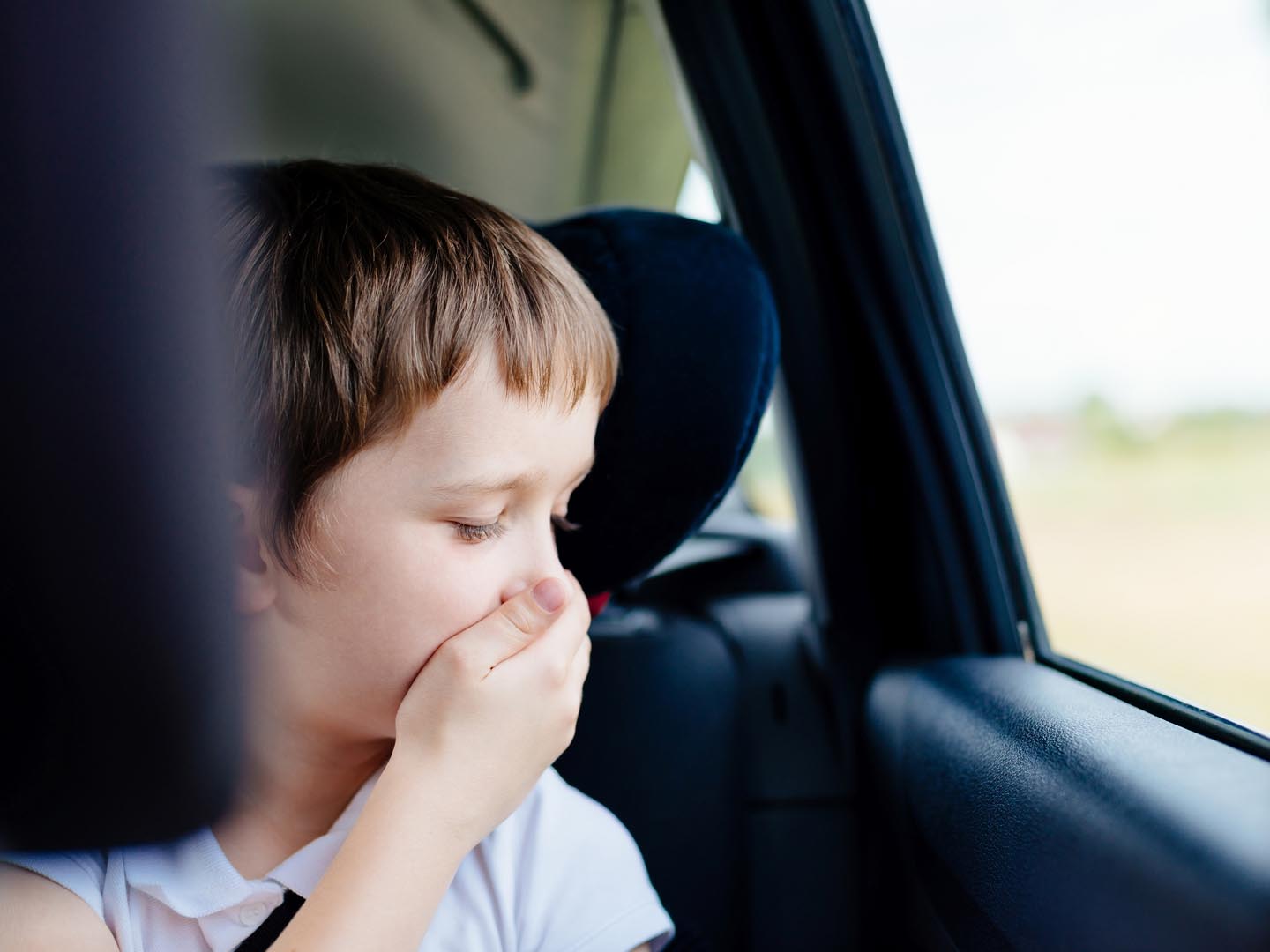Carsickness

Carsickness, like all types of motion sickness occurs when the brain receives conflicting signals from the inner ears, eyes, and other parts of the body that sense motion. A child sitting in the back seat of a car may sense movement – her inner ear perceives the motion – but she may not be able to see out the window to see that she is moving. At the same time, her perception is that her body isn’t moving at all. In some children, these conflicting messages can result in very distressing nausea.
One effective remedy for motion sickness comes from an old Chinese fisherman’s remedy of stimulating the acupressure points that control nausea. The updated version of this treatment is done with wristbands equipped with a plastic peg that presses on acupressure points on the inner surfaces of the wrists. The wristbands are available at most drug and health-food stores. Follow package directions carefully – proper placement of the wristbands is critical.
Motion sickness can also be prevented (and treated) with ginger. Mix a half teaspoon of ginger powder in a glass of water and give it to your child 20 minutes before you get in the car. Or give your child two capsules of powdered ginger. This remedy has proved more effective than Dramamine – with none of the drowsiness that can occur as a side effect of the drug. Ginger snaps, ginger ale and candied ginger can all help with mild nausea, so keep some in the car should someone develop symptoms during the trip. You also could explore homeopathic remedies – and possibly hypnosis – as a long-term solution.
The American Academy of Pediatrics suggests trying to deal with carsickness in children by focusing youngsters’ attention away from their queasiness. Listen to the radio or tapes, sing or talk. Also, direct their attention at things outside the car, not at books or games. Make sure that they look out the front windows, where apparent motion of objects is less.









